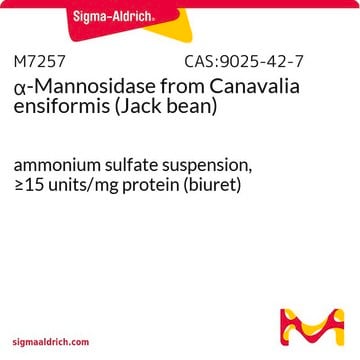W779865
L-cisteína hydrochloride monohydrate
99%, FG, produced by Wacker Chemie AG, Burghausen, Germany
About This Item
Productos recomendados
origen biológico
synthetic
grado
FG
cumplimiento norm.
EU Regulation 1334/2008 & 178/2002
Ensayo
99%
actividad óptica
[α]/D 5.7 to 6.8° (Ph. Eur. (2.2.7))
impurezas
≤10 ppm heavy metals (Ph. Eur. (2.4.8))
≤200 ppm ammonium (Ph. Eur. (2.4.1))
residuo de ign.
≤0.1% (Ph. Eur. (2.2.14))
pérdida
8-12% loss on drying
trazas de catión
As: ≤1 ppm (Ph. Eur. (2.4.2))
Pb: ≤5 ppm
idoneidad
clear, colorless for appearance of solution (Ph. Eur. (2.2.1))
positive for identity (Ph. Eur. (2.2.24))
aplicaciones
flavors and fragrances
Documentación
see Safety & Documentation for available documents
alérgeno alimentario
no known allergens
Organoléptico
faint
cadena SMILES
O.Cl.N[C@@H](CS)C(O)=O
InChI
1S/C3H7NO2S.ClH.H2O/c4-2(1-7)3(5)6;;/h2,7H,1,4H2,(H,5,6);1H;1H2/t2-;;/m0../s1
Clave InChI
QIJRTFXNRTXDIP-JIZZDEOASA-N
¿Está buscando productos similares? Visita Guía de comparación de productos
Acciones bioquímicas o fisiológicas
Código de clase de almacenamiento
13 - Non Combustible Solids
Clase de riesgo para el agua (WGK)
WGK 1
Punto de inflamabilidad (°F)
Not applicable
Punto de inflamabilidad (°C)
Not applicable
Elija entre una de las versiones más recientes:
Certificados de análisis (COA)
¿No ve la versión correcta?
Si necesita una versión concreta, puede buscar un certificado específico por el número de lote.
¿Ya tiene este producto?
Encuentre la documentación para los productos que ha comprado recientemente en la Biblioteca de documentos.
Nuestro equipo de científicos tiene experiencia en todas las áreas de investigación: Ciencias de la vida, Ciencia de los materiales, Síntesis química, Cromatografía, Analítica y muchas otras.
Póngase en contacto con el Servicio técnico





